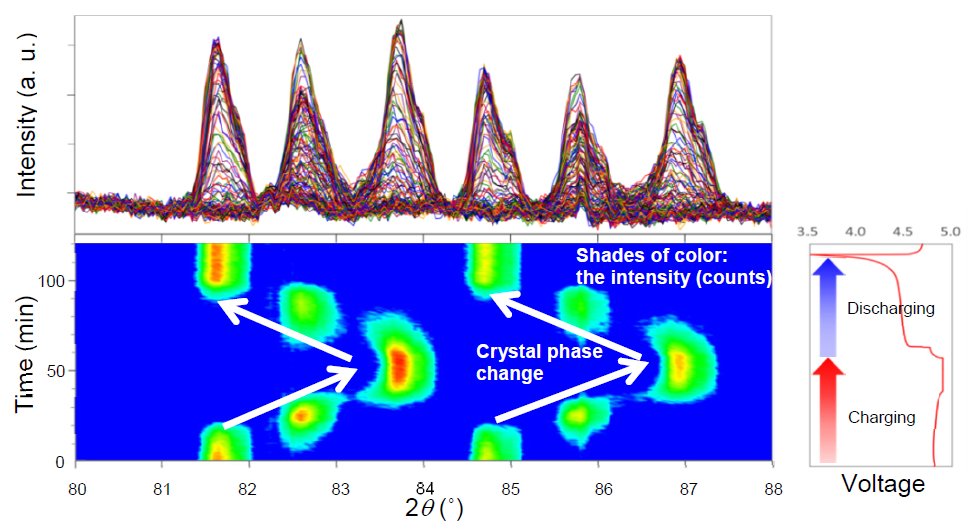Charge/discharge Process of Li-ion Battery Positive Electrode
Introduction
Lithium ion secondary batteries are widely used in small portable devices such as mobile phones. Research and development of lithium ion batteries for use in automobiles and larger machines is an active field. To develop lithium ion secondary batteries with high capacity, high stability and long life, it is essential to evaluate the stability of the positive electrode material during the charge/discharge process. Operando X-ray diffraction measurements using an attachment that reproduces the charge/discharge environment and a 2D detector that can perform high-speed measurements enables detailed observation of crystal phase changes while a battery is in use, making it suitable for studying battery performance and life.
Measurements and results
X-ray diffraction measurements of the positive electrode material during high-speed charging and discharging were carried out with a battery cell attachment and a HyPix-3000 2D detector on a SmartLab X-ray diffractometer. Figure 1 shows a picture and an illustration of the cross-sectional structure of a battery cell attachment. The positive electrode material was LiMn₁.₅Ni₀.₅O₄. Measurement using an exposure time of 15 seconds was repeated while charging/discharging the electrode at a charge and discharge rate 1C = 132 mA/g. Changes to the X-ray diffraction profile over time were investigated.
Figure 2 shows the multiple 1D XRD profiles, 2D profile maps and voltage graphs. Two steps of a two-phase coexistence reaction occurred with charging and discharging. After charging and discharging, the electrode material returned to the same crystal phase as before the measurement started.
 Figure 1: Photograph and illustration of the battery cell attachment.
Figure 1: Photograph and illustration of the battery cell attachment.

Figure 2: Multiple 1D XRD profiles, 2D profile maps and voltage graphs from repeated charge/discharge of the electrode material.

Contact Us
Whether you're interested in getting a quote, want a demo, need technical support, or simply have a question, we're here to help.
